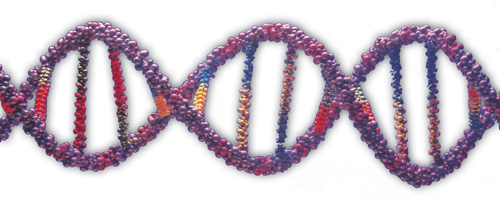|
[home] [subscription form] [cover story] [introduction] [people and places] [medical spa destinations]
|
||

VOLUME 2007 chapter 8
Human Skin Cells Reprogrammed to Act Like Stem Cells
Two separate teams, one from the University of Wisconsin-Madison (USA), and the other from Kyoto University (Japan), reported that they had successfully reprogrammed human skin cells to act like embryonic stem cells. Thee University of Wisconsin team, led by James Thomson (who first developed the initial human embryonic stem cell line almost ten years ago, employed somatic cell nuclear transfer to use four factors to reprogam human skin (somatic) cells to pluripotent stem cells. In the Kyoto University work, Shinya Yamanaka and colleagues inserted four genes into human skin cells to reprogram them into “induced pluripotent cells,” which look and act like stem cells.
[Yu J, Vodyanik MA, Smuga-Otto K, Antosiewicz-Bourget J, Frane JL, Tian S, Nie J, Jonsdottir GA, Ruotti V, Stewart R, Slukvin II, Thomson JA. “Induced Pluripotent Stem Cell Lines Derived from Human Somatic Cells.” Science. 2007 Nov 20; [Epub ahead of print]; Takahashi K, Tanabe K, Ohnuki M, Narita M, Ichisaka T, Tomoda K, Yamanaka S. “Induction of pluripotent stem cells from adult human fibroblasts by defined factors.” Cell. 2007 Nov 30;131(5):861-72.]
Dr Klatz remarks: “This is a pair of landmark advancements that circumvents a number of ethical and practical obstacles to stem cell therapeutics. These researchers have identified a potentially abundant source of stem cells for therapeutics that can treat a wide variety of aging-related disorders.”
Cancer Risks of a Carb-Related Carcinogenx
Increased dietary intake of acrylamide, a carcinogen created when starchy (carbohydrate-rich) foods are baked, roasted, fried or toasted may raise the risk of endometrial cancer by 29%, and ovarian cancer by 78%. Janneke Hogervorst and colleagues from Maastricht University (The Netherlands) analyzed data from more than 62,000 women in the Netherlands for a 11.3-year period. Where the average acrylamide intake was 8.9 mcg per day, the highest intake, at 40.2 mcg per day, was associated with the greatest increases in risks of both endometrial and ovarian cancers. Dr. Hogervorst’s team found that the risks were even more pronounced in people with no history of smoking, where the highest acrylamide intakes were associated with a 99% increase in risk of endometrial cancer and 122% increase in risk of ovarian cancer.
[Hogervorst JG, Schouten LJ, Konings EJ, Goldbohm RA, van den Brandt PA. “A prospective study of dietary acrylamide intake and the risk of endometrial, ovarian, and breast cancer.” Cancer Epidemiol Biomarkers Prev. 2007 Nov;16(11):2304-13.]
Dr. Goldman observes: “This is one of a few long-term, human studies that correlates dietary factors to increased cancer risks. Acrylamide first made headlines five years ago when scientists at the Swedish Food Administration first reported that high levels of acrylamide caused cancer in laboratory animals. Since then, animal studies continue to show the risks associated with the compound. This observational study points to the importance of making prudent dietary choices, to reduce or eliminate one’s consumption of highly processed carbohydrates.”
Bulky Biceps, Trim Waist Correlate to Longevity in Men
The size of a man’s waistline and the muscle mass of his biceps provide snapshot of mortality risk in aging men. S. Goya Wannamethee and colleagues from Royal Free and University College Medical School (London, United Kingdom) studied more than 4,100 men ages 60 to 79, and found that those with a waist circumference less than 40 inches (102 centimeters) and above-average muscle mass in their upper arms were up to 36% less likely to die over a six-year period (as compared to those with bigger waists and smaller arm muscles). The researchers also found the combination of waist size and arm muscle mass to provide a far more accurate gauge of death risk as compared to body mass index (BMI) measurements, which the team found was linked to mortality only among very thin men.
[Wannamethee SG, Shaper AG, Lennon L, Whincup PH. “Decreased muscle mass and increased central adiposity are independently related to mortality in older men.” Am J Clin Nutr. 2007 Nov;86(5):1339-46.]
Comments Dr. Klatz: “These findings emphasize the role of life-long fitness in longevity. Fitness is a key element in the anti-aging lifestyle, and men who choose this lifestyle can indeed live longer and better lives.”

